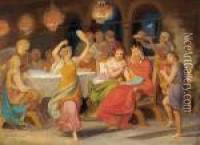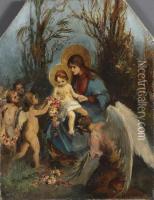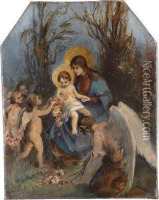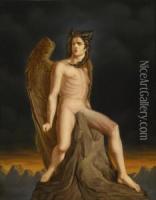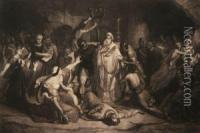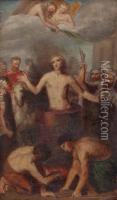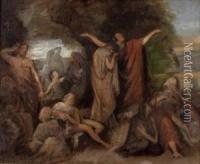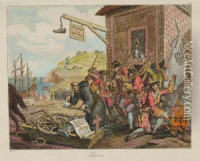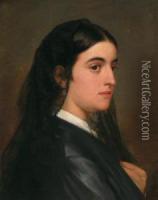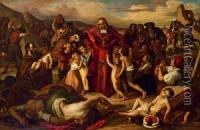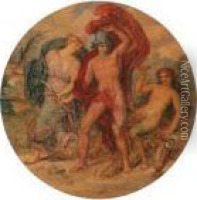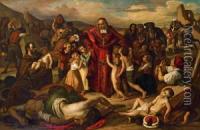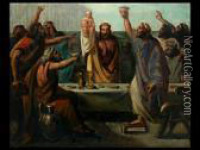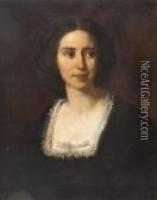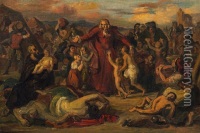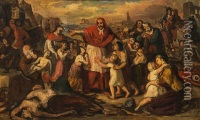Carl Rahl Paintings
Carl Rahl, also known as Karl Rahl, was a prominent Austrian painter, born in Vienna on August 13, 1812. He was the son of the engraver Carl Heinrich Rahl and was destined to leave a significant mark in the art world. Educated at the Academy of Fine Arts Vienna, Rahl's early promise was nurtured under the guidance of distinguished artists such as Josef Danhauser and Johann Peter Krafft. His education laid the groundwork for his evolution into a master of historical and mythological painting, distinguishing himself through his meticulous detail, vibrant color, and dynamic compositions.
Rahl's career was a testament to his relentless pursuit of artistic excellence. After completing his studies, he embarked on travels that took him through Germany, Italy, and Greece. These journeys were not merely geographic but also a profound exploration of the cultural and artistic heritage of Europe. Italy, with its rich legacy of Renaissance art, and Greece, with its classical beauty, left indelible marks on Rahl's creative psyche. His experiences in these countries deepened his understanding of historical and mythological subjects, which became the cornerstone of his artistic repertoire.
In 1847, Rahl returned to Vienna, where he established himself as a leading figure in the Austrian art scene. His studio became a hub for young artists, whom he mentored with a passion reminiscent of the Renaissance workshops. Among his contributions to the Viennese art scene was the co-founding of the Vienna Kunstverein, an association aimed at promoting the arts and fostering artistic talent. Rahl's influence extended beyond his immediate circle, impacting the broader trajectory of Austrian art.
Rahl's legacy is perhaps most visible in his monumental frescoes and murals, which adorn many public and private buildings across Vienna. His work in the Greek Orthodox Church of the Holy Trinity in Vienna is particularly notable, showcasing his mastery of large-scale compositions and his ability to imbue religious subjects with a sense of grandeur and emotional depth.
Carl Rahl's life was a journey marked by artistic innovation, cultural exploration, and a relentless commitment to beauty. He passed away on July 9, 1865, in Vienna, but his legacy endures through his contributions to the Austrian art tradition and the countless artists he inspired. His work continues to be celebrated for its technical brilliance, emotional resonance, and profound understanding of human history and mythology.
